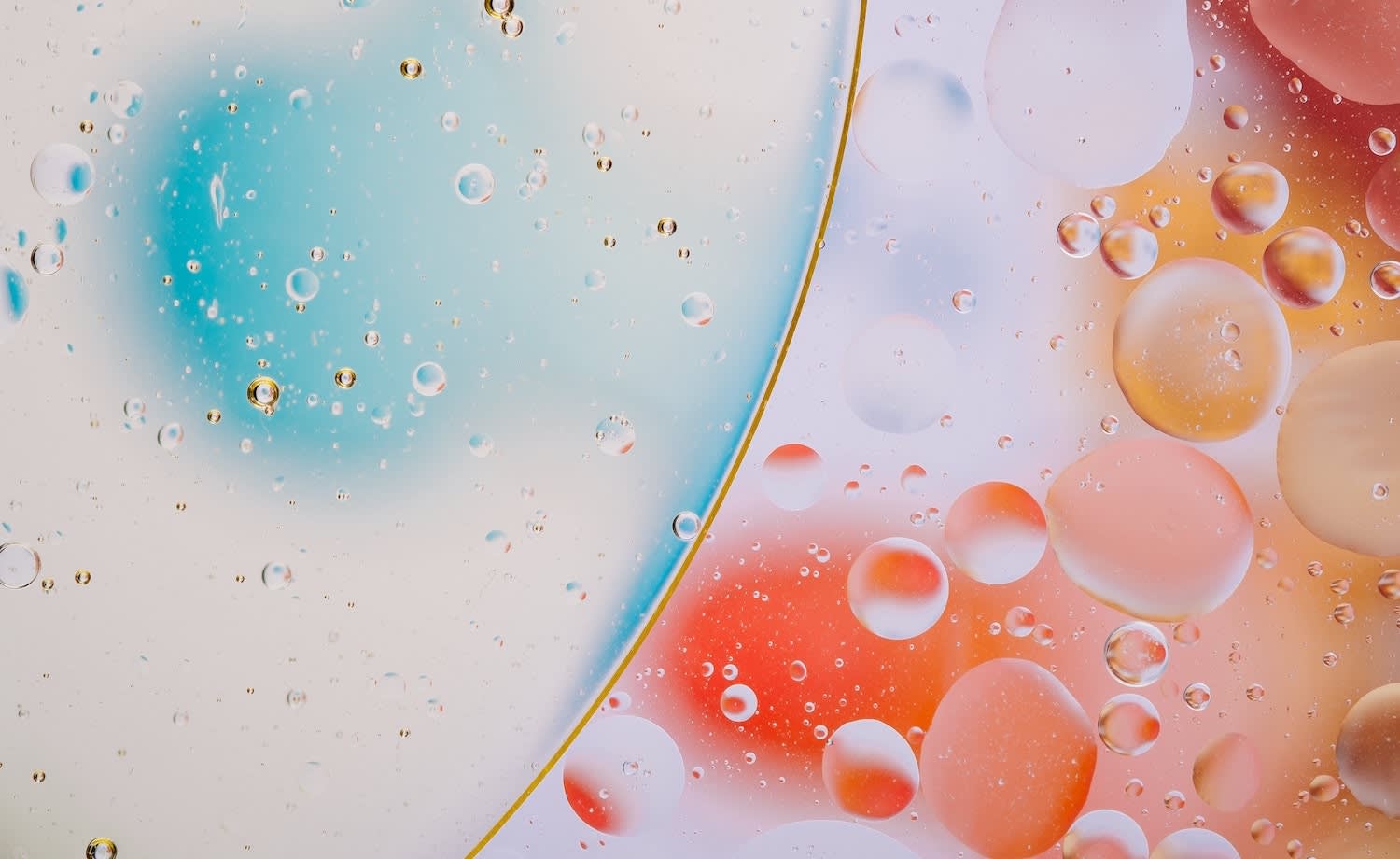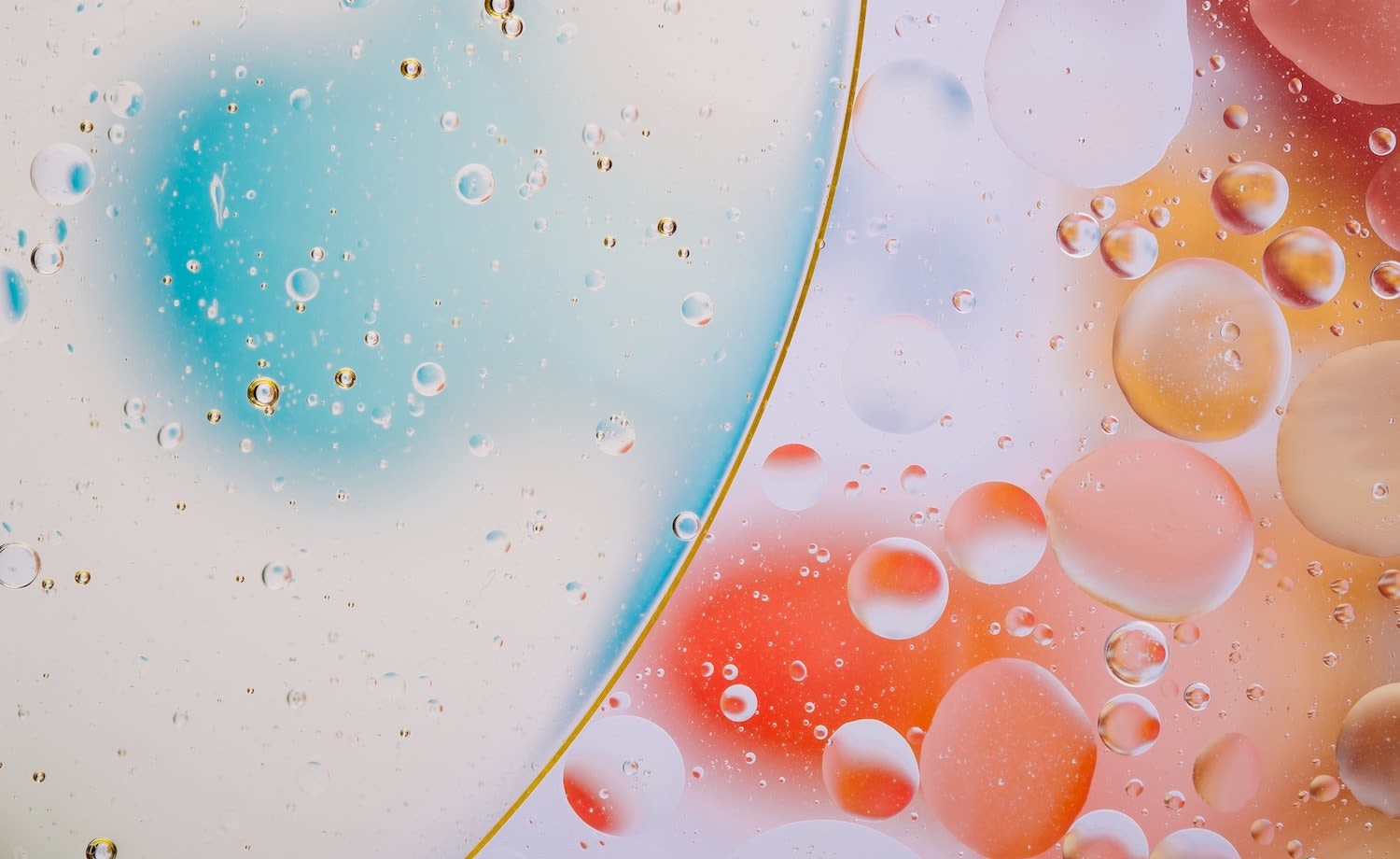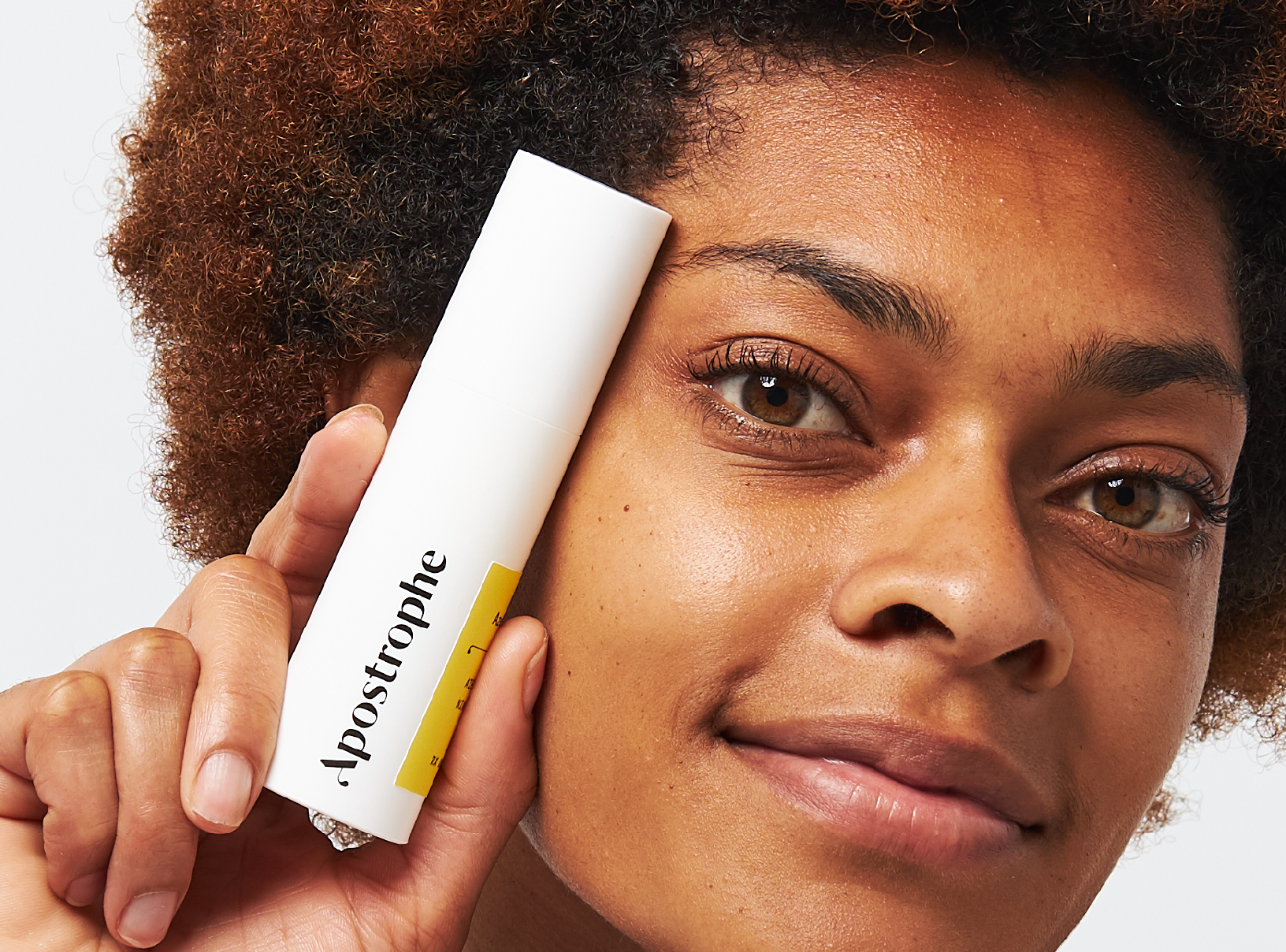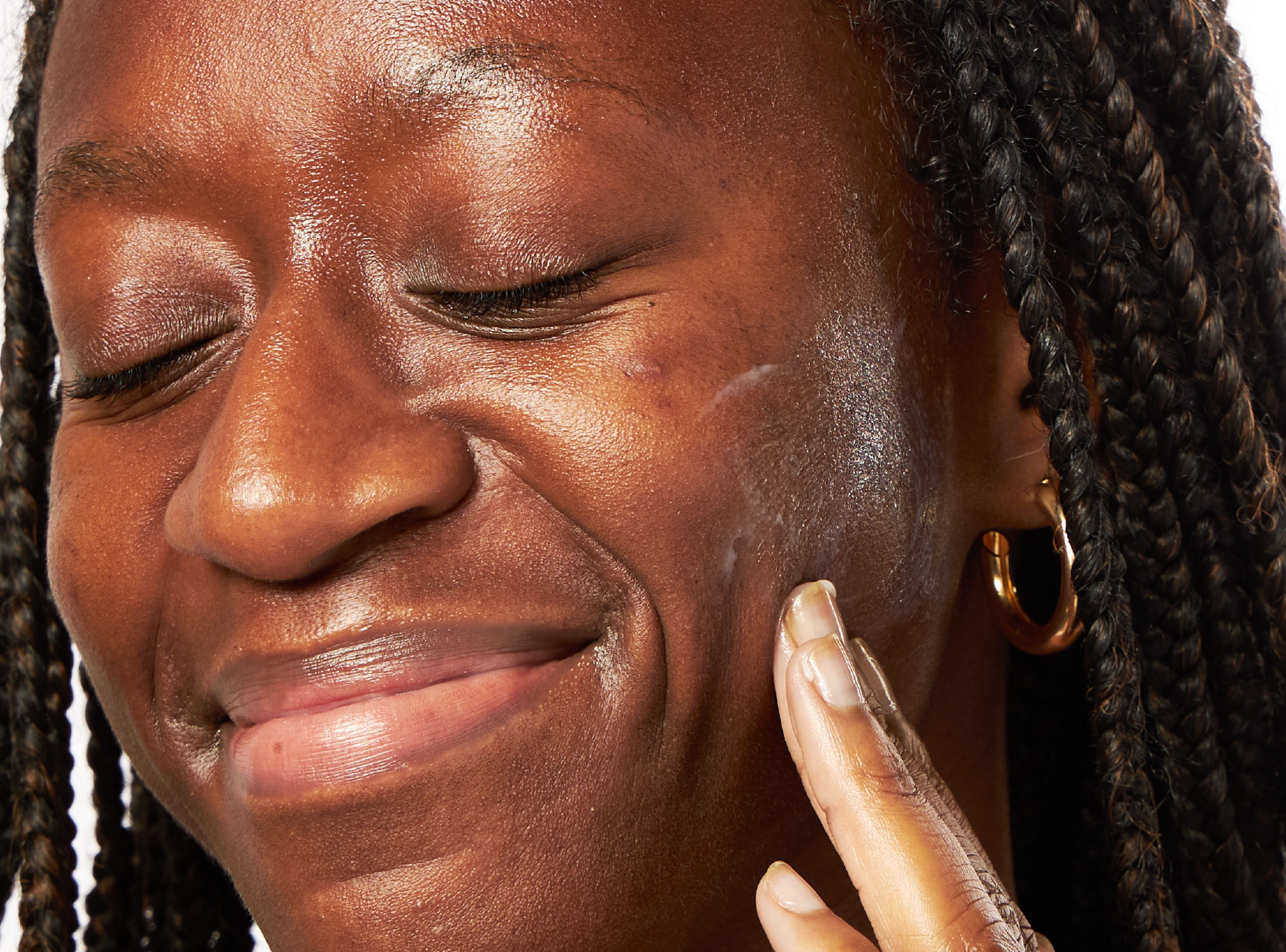Education
What does glycolic acid do?


SHARE
Education
What does glycolic acid do?
Medically reviewed by Jill Johnson, DNP, APRN, FNP-BC
Written by Apostrophe Team
Last updated 4/1/2024
Search for information about skin care ingredients and you’ll quickly find glycolic acid, a popular alpha-hydroxy acid that can be found in everything from facial cleansers to lotions, night serums, and resurfacing pads.
Glycolic acid is a peeling agent, or exfoliant. Like other skin care ingredients in this category, it works by removing the layer of dead skin cells that can build up on the surface of your skin over time.
Research shows that glycolic acid works well, especially as a treatment for mild acne breakouts and many common signs of skin aging.
There’s a lot of information out there about how glycolic acid can help with acne-prone skin and help people that are experiencing signs of aging.
So, does glycolic acid deserve a place in your skin care routine? Below, we’ve gone into greater detail about what glycolic acid is, how it works, and the latest research on the effects of glycolic acid on acne and signs of skin aging, such as wrinkles and discoloration.
We’ve also talked about where you can find glycolic acid, as well as the easiest ways to add it to your skin care routine for smoother skin and better results.
What Is Glycolic Acid?
Glycolic acid is a type of alpha-hydroxy acid, or AHA. In fact, it’s arguably the most popular AHA that’s currently used in skin care products.
Other alpha-hydroxy and beta-hydroxy acids (BHAs) used in skin care include tartaric acid, citric acid, lactic acid, and salicylic acid.
When applied topically, alpha-hydroxy acids like glycolic acid cause the outer layer of your skin to peel away and shed.
To understand how this affects acne and aging, it’s important to quickly cover the basics of how your skin repairs and rejuvenates itself.
Your skin is constantly repairing and replacing itself through a process called skin cell turnover, or epidermal turnover. As part of this process, new cells created in the basal layer of skin make their way to the surface to replace old ones.
Epidermal turnover is important for maintaining your skin and replacing cells that are damaged by UV radiation, wind, or everyday injuries such as scratches.
It’s also important for ensuring your skin is able to act as a protective barrier that keeps bacteria and other pathogens out of your body.
As old cells are replaced by new ones, they harden and die off, forming a thin layer of dead skin cells that seals your skin from the environment.
This layer of cells sheds itself naturally. However, the process is often slow. As dead cells build up on the surface layer of your skin, they can mix with sebum to clog your pores, causing acne, and give your skin a dull, aged appearance with visible fine lines and wrinkles.
Alpha-hydroxy acids such as glycolic acid remove this layer of dead cells, giving your skin a smoother texture and appearance. They also stimulate collagen production, allowing your skin to maintain greater elasticity and a smoother texture.
As part of this process, many common skin concerns, such as fine lines, wrinkles, and dark spots, become less visible.
Currently, glycolic acid is used in over-the-counter products, such as facial cleansers, serums, and moisturizers.
It’s also used in a much stronger concentration as a peeling agent for chemical peel procedures performed by dermatologists and plastic surgeons.
Glycolic Acid and Acne
Acne develops when your hair follicles, or pores, become clogged due to a mix of sebum (a type of natural oil that’s produced by your skin) and dead skin cells.
More severe types of acne, such as nodular or cystic acne, develop when bacteria start to grow inside a clogged pore and, as a result, cause inflammation and swelling.
Because of glycolic acid’s effects on the skin cell peeling process, it’s often chosen as an active ingredient in over-the-counter acne products.
Right now, there’s only a limited amount of research available on the effects of over-the-counter glycolic acid products.
However, research has largely found that glycolic acid peels -- cosmetic procedures that involve stronger glycolic acid solutions -- are effective at getting rid of acne.
For example, one study published in the journal Dermatologic Surgery looked at the effects of a 40% glycolic acid solution in Asian patients with moderate acne.
The researchers tested the glycolic acid solution by applying it to half of the face, with the other half treated using a non-therapeutic placebo solution. The study took place over the course of 10 weeks, with the application procedure carried out at two-week intervals.
Throughout the study, the skin treated using glycolic acid showed fewer acne than skin treated with the placebo, leading the researchers to conclude that glycolic acid peels may “significantly improve” moderate acne.
A review published in the journal Clinical, Cosmetic and Investigational Dermatology looked at several studies of glycolic acid peels as acne treatments.
The researchers found that most patients treated with glycolic acid experienced improvements in acne lesion count and skin texture.
It’s worth noting that although the findings of these studies are good news for glycolic acid as a treatment for acne, the glycolic acid solutions used in this research were far stronger than most over-the-counter acne products.
For example, most studies looked at the effects of 40 to 70% glycolic acid. In comparison, most creams, serums, and other topical glycolic acid products available over the counter contain from 3% to 10% glycolic acid.
While these products are likely still effective, they may take longer to produce improvements in acne than the high-strength peeling treatments that use a larger percentage of glycolic acid, like the ones used in most studies.
Glycolic Acid for Anti-Aging
Like other exfoliants, glycolic acid is a popular powerhouse ingredient in night creams, lotions, serums, and other products designed to treat wrinkles, age spots, and other signs of skin aging.
Skin aging occurs due to a combination of intrinsic changes in your skin and damage caused by sun exposure, gravity, and use of your facial muscles.
Numerous studies have found that glycolic acid can make wrinkles and other signs of skin aging less visible.
For example, one study published in the Journal of Dermatological Science in 2001 used digital image analysis to assess the efficacy of glycolic acid peeling on facial wrinkling.
The researchers found that treatment with glycolic acid reduced the size and number of wrinkles in the study participants, but that it was most effective on participants in their 30s, 40s, and 50s rather than older participants.
They theorized that this might be associated with the depth of wrinkles, which tends to increase with age.
A slightly older study published in the journal Dermatologic Surgery looked at glycolic acid as a treatment for skin aging of the face and neck.
Unlike most studies of glycolic acid, this research involved a 5% topical glycolic acid treatment similar to glycolic acid products available over the counter, rather than the typical stronger acid peeling treatment.
Participants in this study were placed into two groups where they used either the 5% glycolic acid cream or a placebo over the course of three months.
At the end of the study period, the researchers observed a statistically significant improvement in skin texture and discoloration in the patients that used the glycolic acid solution, as well as a small, statistically insignificant improvement in wrinkles.
Other research has also found that glycolic acid may produce improvements in melasma, mild wrinkling, acne scars, and other common skin concerns.
Glycolic Acid Side Effects & Safety
Glycolic acid is a popular, well-studied skin care ingredient with a good safety record. However, like many other ingredients used in over-the-counter acne and anti-aging products, it does have the potential to cause side effects and safety issues when misused.
According to the Food and Drug Administration (FDA), the most frequently reported side effects of alpha-hydroxy acids (the group of acids that includes glycolic acid) are:
Burning
Dermatitis or rash
Swelling
Changes in skin pigmentation
Blisters and/or hives
Skin peeling
Itching
Irritation and/or tenderness
Chemical burning
Increased sunburn
These effects only affect a small percentage of people who use skin care products that contain glycolic acid. According to the FDA, they appear to occur more often with high-strength topical products, such as skin care products marketed for their ability to peel the skin.
You may be more likely to experience side effects from glycolic acid if you have sensitive skin, or if you use multiple acne or anti-aging products that contain chemical exfoliants at once.
Research shows that alpha-hydroxy acids increase your skin’s sensitivity to UV radiation from sunlight, meaning you may burn faster when you spend time outdoors.
This effect isn’t permanent. In fact, the same research shows that it appears to reverse relatively quickly after you stop using products that contain alpha-hydroxy acids.
If you use skin care products that contain glycolic acid, it’s important to take extra care of your skin when you spend time in the sun.
Make sure to apply an SPF 30+ sunscreen before you spend time outdoors. If you’re spending time at the pool or beach, use a water-resistant sunscreen or reapply your sunscreen after you spend time in the water. If you’re looking for a derm-approved SPF, get our best-selling sensitive face sunscreen, ’Screen.
It’s also best to cover your skin with clothing, a hat, and sunglasses whenever you spend a long period of time outdoors.
Where Can You Find Glycolic Acid?
Glycolic acid is a popular active ingredient in over-the-counter skin care products, meaning you can find it online and at your local drugstore.
Popular products that may contain glycolic acid include facial cleansers, lotions, masks, serums, peels, and resurfacing pads. If a product contains glycolic acid, it will mention it on the packaging or in the ingredients list.
Glycolic acid is also used in professional chemical peeling treatments offered by dermatologists and plastic surgeons. This type of procedure uses a more concentrated form of glycolic acid that isn’t available over the counter.
How to Use Glycolic Acid Products
Products containing glycolic acid can be a valuable addition to your skin care routine, especially if you’re interested in preventing acne and signs of aging.
For the most part, using a skin care product that contains glycolic acid is a simple process -- just follow the instructions provided on the product’s label. However, there are several steps that you can take to get the best results:
Start with a mild glycolic acid treatment. Products that contain glycolic acid can range from mild (around 3% glycolic acid) to relatively strong (up to 10% glycolic acid). If you’ve never used glycolic acid or a similar exfoliant before, start with a mild product to see how your skin responds. Be on the lookout for common side effects such as irritation or changes in your skin tone, which may occur during the first few months of use.
Only use one glycolic acid product at a time. Using more than one skin care product that contains glycolic acid isn’t likely to improve your results, although it may cause skin irritation and other side effects.
Wait two to three months to assess your results. Like other exfoliants, it takes time for glycolic acid to produce an improvement in your skin. Make sure to keep using your skin care products, even if you don’t notice any immediate results.
Always use sun protection. As we mentioned above, glycolic acid can make your skin more sensitive to sunlight. Make sure to use sunscreen when you’re outside, especially during summer.
If you have severe acne, talk to a dermatologist. While products that contain glycolic acid are often enough to treat mild to moderate acne, they may not be powerful enough to get rid of severe acne or cystic acne.
If you have severe acne breakouts that don’t seem to get better, talk to your healthcare provider or schedule an appointment with a dermatologist. They’ll be able to administer higher-strength peels that should only be done by a professional.
In Conclusion
Glycolic acid is a popular active ingredient in topical treatments for acne, as well as anti-aging products like serums, lotions, and peeling gels.
As with many other skincare routine ingredients, glycolic acid is popular for a reason -- research shows that it works. Used properly, glycolic acid can get rid of acne breakouts and treat many common signs of aging, including fine lines and hyperpigmentation.
If you experience side effects from glycolic acid, it’s important to talk to your healthcare provider or schedule an appointment with a dermatologist for a personalized acne treatment.
Want to get expert treatment for your skin from home? Get connected with an expert derm team through Apostrophe and get a customized treatment plan for your skin.
11 Sources
Alpha Hydroxy Acids. (2020, August 24). Retrieved from https://www.fda.gov/cosmetics/cosmetic-ingredients/alpha-hydroxy-acids
Koster, M.I. (2009, July). Making an epidermis. Annals of the New York Academy of Sciences. 1170, 7–10. Retrieved from https://www.ncbi.nlm.nih.gov/pmc/articles/PMC2861991/
How does skin work? (2019, April 11). InformedHealth.org. Retrieved from https://www.ncbi.nlm.nih.gov/books/NBK279255/
Kim, S.J., Park, J.H., Kim, D.H., Won, Y.H. & Maibach, H.I. (1998, October). Increased in vivo collagen synthesis and in vitro cell proliferative effect of glycolic acid. Dermatologic Surgery. 24 (10), 1054-8. Retrieved from https://pubmed.ncbi.nlm.nih.gov/9793513/
Acne. (n.d.). Retrieved from https://www.americanskin.org/resource/acne.php
Kaminaja, C., Uede, M., Matsunada, H., Furuwaka, F. & Yamamoto, Y. (2014, March). Clinical evaluation of glycolic acid chemical peeling in patients with acne vulgaris: a randomized, double-blind, placebo-controlled, split-face comparative study. Dermatologic Surgery. 40 (3), 314-22. Retrieved from https://pubmed.ncbi.nlm.nih.gov/24447110/
Sharad, J. (2013). Glycolic acid peel therapy – a current review. Clinical, Cosmetic and Investigational Dermatology. 6, 281–288. Retrieved from https://www.ncbi.nlm.nih.gov/pmc/articles/PMC3875240/
Skin Care and Aging. (2017, October 1). Retrieved from https://www.nia.nih.gov/health/skin-care-and-aging
Funasaka, Y., et al. (2001, August). The efficacy of glycolic acid for treating wrinkles: analysis using newly developed facial imaging systems equipped with fluorescent illumination. Journal of Dermatological Science. 27 Suppl 1, S53-9. Retrieved from https://pubmed.ncbi.nlm.nih.gov/11514125/
Thibault, P.K., Wlodarczyk, J. & Wenck, A. (1998, May). A double-blind randomized clinical trial on the effectiveness of a daily glycolic acid 5% formulation in the treatment of photoaging. Dermatologic Surgery. 24 (5), 573-7, discussion 577-8. Retrieved from https://pubmed.ncbi.nlm.nih.gov/9598014/
Sharad, J. (2013). Glycolic acid peel therapy – a current review. Clinical, Cosmetic and Investigational Dermatology. 6, 281–288. Retrieved from https://www.ncbi.nlm.nih.gov/pmc/articles/PMC3875240/
Like what you just read? Sign up for our email list to get the scoop on skincare science delivered straight to your inbox.

Deep Dives
A dermatologist shares his thoughts on the recent studies about benzoyl peroxide and benzene.
Read More
Education
What is milia?
What is milia? Today, we’re jumping into one type of bump that you may have heard about most commonly in infants — milia.
Read More
Education
Best moisturizer for acne-prone skin
If you have combination acne-prone skin, figuring out which moisturizer is best for your skin might be tough. In this guide, we break down the best moisturizer for combination, acne-prone skin.
Read More

